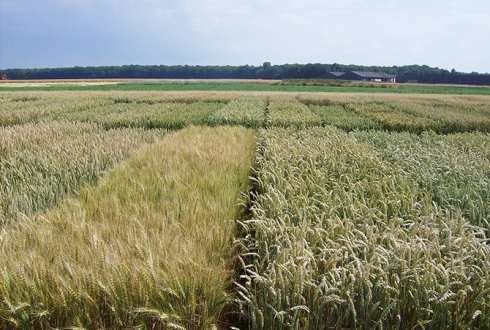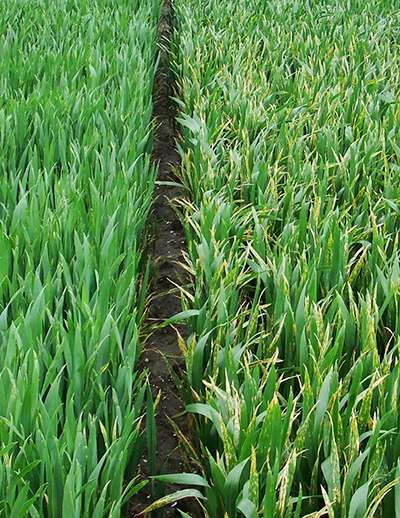Independent variety trials show productivity of wheat varieties continues to increase

Nowhere in the world is the average grain yield as high as in the Netherlands, where it is over ten tonnes per hectare. Research by Wageningen UR shows that the introduction of new varieties has caused yields to increase by approximately 8 to 10 per cent per decade. Converted to a hectare of winter wheat, this represents an increase of 800 to 1,000 kilograms; a huge achievement for breeders of new varieties. Wageningen UR scientist Lubbert van den Brink also underlines the importance of independent variety trials. "We make the genetic progress visible in a reliable way, and help arable farmers select varieties that offer the highest yield and, therefore, the best returns on their soil."
Three-year trial
Wageningen UR performs these variety trials for breeding companies. New varieties are only added to the Recommended List of Varieties (Aanbevelende Rassenlijst) after reliable tests have determined that they perform better than previous varieties. As annual and field conditions impact variety performance, this takes a trial period of at least three years. Each year in September, at the start of the sowing season, CSAR (the Dutch Recommended List Committee) announces which winter wheat varieties are being recommended after including the field test results from that year. As a result of the partial automation of the data processing, the scientists have figures available within one month of harvesting.
Better resistance
In addition to a higher yield, the grain sector is constantly looking for varieties with better disease resistance to ensure that the yield is more secure and the use of crop protection products can be minimised. For winter wheat this involves diseases such as yellow rust, mildew, brown rust, leafspot and fusarium in the ear. By selecting varieties with a good disease resistance, breeders therefore minimise costs and benefit the environment due to the reduced use of crop protection products. Including the recommended varieties in the research allows an annual re-evaluation of the susceptibility to the main wheat pathogens. On the long run, it happens that some varieties become more vulnerable because the fungal diseases adapt. A new race of yellow rust appeared in recent years, for instance. Thanks to the variety research, grain breeders can immediately see how existing varieties cope.

Different causes for stagnation
While Wageningen scientists see a constant increase in the yields on test fields, the annual increase for arable farmers is not as visible. In fact, over the past ten years the yield has barely improved in practice while the potential maximum yield of the new varieties did increase. "Although the exact cause of this stagnation is unknown, it is probably due to changing cultivation conditions," says Van den Brink. "Nowadays, wheat is often sown at a later date and on less favourable fields." Fertilising limitations and decreasing investments in cultivation research may also play a role. "But the crop has been gaining more attention recently. There is a growing group of arable farmers who are dissatisfied with an average yield of ten tonnes per ha and aim to increase it to 15 tonnes. This is theoretically feasible."
Provided by Wageningen University




















